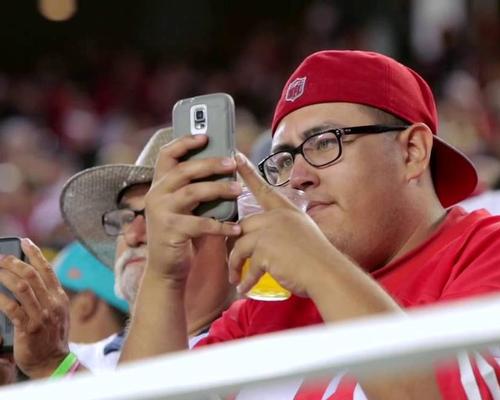25 Oct 2016
How can new technology enhance the stadium experience?
BY Kim Megson

Professionals involved in the development of sporting arenas should investigate the merits of technology such as augmented reality and virtual reality in terms of how they could enhance the spectator experience.
That is the view of Pascal Vuilliomenet, vice president for innovation and technology transfer at the EPFL Research institute in Switzerland and co-curator of the Olympic Museum’s new exhibition on past, present and future stadium design.
"We can project ourselves in the future and see how technology can enhance new experiences for spectators,” Vuilliomenet told Sports Management. “Something that will always remain is the evolution that being in a stadium creates from feeling like one single person to part of a crowd. Together, by sharing an event you will experience things that you cannot experience alone in front of the TV.
“The magic of the situation is supported by the stadium itself and everybody who’s been in a stadium knows this unique feeling. I believe new technology can be used to make this shared experience even stronger.”
Technologies ready to be used include augmented reality, virtual reality and smartphones – which can provide information and statistics about the on-field action, allow people to share their feelings with other fans, and give them access to different camera angles in real time.
“Take an Olympic stadium as an example,” he said. “You may be watching the athletics and you’re sitting in front of the pole vault but you’re also interested in the 100 metres taking place on the other side of the stadium. With a smartphone, you can watch from a second site. You get to both be inside the stadium and feel the atmosphere, while getting a better view through a screen.”
To give people at home or in fan zones a taste of the immersive stadium experience, he suggested both 360 degree cameras and augmented reality (AR) projections could be used to enhance the feeling of watching live sport at the same time as thousands of others inside a sporting venue.
Such technology has been developed by Microsoft, whose HoloLens – described by the company as the “world’s first fully untethered holographic computer” – has been set up to allow users to watch US National Football League matches as 3D holograms rather than on a screen, as well as projecting displays, players stats and instant replays.
“This is not science fiction,” Vuilliomenet said. “These technologies are all in the labs and ready to be implemented. The types of experience just have to be developed.
“For example, AR promises a lot in this area and has been there for a while. The question is how do we implement it to create a real stadium experience. We need to start a discussion about what we’ll do, how we’ll do it, and who we’ll do it for.
“Some people want to go to the stadium just for the live experience, and aren’t that interested, but another group want to receive information about the match in a different way. We can develop lots of new experiences for this subset of people that channel the joy and jubilation of the watching sport in a stadium.”
Vuilliomenet’s Olympic Museum exhibition, called Stadiums: Past and Future, focuses on the design and engineering of Olympic stadiums from the Olympia in Ancient Greece to the prospective venues of future Games.
Close Window